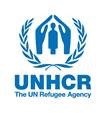Socioeconomic Survey of Refugees in Kakuma 2019
Kenya, 2019
Get MicrodataIdentification
KEN_2019_SES-KKM_v01_M
Socioeconomic Survey of Refugees in Kakuma 2019
| Name | Country code |
|---|---|
| Kenya | KEN |
Other Household Survey [hh/oth]
UNHCR conducts socio-economic assessments of persons-of-concern (i.e. refugees, asylumseekers, IDPs, etc.) in a variety of countries in order to inform and improve its programming with the goal of promoting self-reliance. While these assessments are not fully standardized and are tailored to their specific country context, the quantitative surveys share strong similarities in their design and objectives, and are therefore considered a survey series for the purpose of microdata documentation/archiving.
Sample survey data [ssd]
Household and individual
Version
v2.1: Edited, anonymous dataset for licensed distribution
Scope
The survey included a range of socio-economic indicators, both at the household and individual household member levels, aligned with the national 2015/16 Kenya Integrated Household Budget Survey (KIHBS) and the 2019 Kenya Continuous Household Survey (KCHS).
| Topic |
|---|
| Income Generation |
| Education |
| Livelihood & Social cohesion |
| Food security |
| Housing, Land and Property |
| Domestic Needs/Household Support |
| Emergency Shelter and NFI |
| Access to Energy |
Coverage
Kakuma Refugee Camp, Kenya
Sampled household survey, representative of all refugees living in Kakuma refugee camp.
Producers and sponsors
| Name |
|---|
| United Nations High Commissioner for Refugees |
| The World Bank |
Sampling
The Kakuma SES utilized a two-stage sampling process where the first stage samples dwellings, stratified by subcamp, followed by second-stage households. Dwellings were drawn as the primary sampling unit (PSU) from an up-to-date list of all dwellings in the camp provided by UNHCR shelter unit, which serves as the sampling frame. The sample was drawn with explicit stratification for the four Kakuma subcamps, with uniform probability for Kakuma 1-3. For Kakuma 4, the selection probability was slightly increased because of higher expected nonresponse
The survey was designed to accurately estimate socioeconomic indicators such as the poverty rate for group sof the population that have at least a 50 percent representation in the population. A 3 percent margin of error at a confidence level of 95 percent is considered accurate, resulting in a sample size of 2,122. Considering a 10 percent nonresponse rate, the target sample size was 2,347.
None
The SES has a non-response rate of about 5%, mainly due to absence of respondent and refusal to participate in the survey
Sample weights for the household data were computed as the inverse of the product of the selection of dwelling at the first stage and the selection of the household at the second stage, computed at the subcamp level. The household weights were adjusted for non-response at the subcamp level. As part of post-stratification, weights were scaled to the population totals in each subcamp.
The household weight variable is called weight and is used with the HH data and the HHM data.
Survey instrument
The following sections are included: household roster, education, employment, household characteristics, assets, access, vulnerabilities, social cohesion, coping mechanism, displacement and cunsumption and expenditure.
Data collection
| Start | End |
|---|---|
| 2019-10-21 | 2019-12-18 |
- Computer Assisted Personal Interview [capi]
| Name |
|---|
| United Nations High Commissioner for Refugees |
| World Bank Group |
Data was collected through smartphone-assisted face-to-face interviewing using KoBo software.
Data processing
The dataset presented here has undergone light checking, cleaning and restructuring (data may still contain errors) as well as anonymization (includes removal of direct identifiers and sensitive variables, recoding and local suppression).
Access policy
United Nations Refugee Agency Microdata Library
https://microdata.unhcr.org/index.php/catalog/302
Original Archive Study ID: UNHCR_KEN_2019_SES_Kakuma_v2.1
Cost: None
Data Access
| Name | Affiliation | |
|---|---|---|
| solutions | UNHCR | solutions@unhcr.org |
| Is signing of a confidentiality declaration required? | Confidentiality declaration text |
|---|---|
| yes | No attempt will be made to identify respondents or microdata providers, and no use will be made of the identity of any person, facility or establishment discovered inadvertently. Any such discovery would immediately be reported to UNHCR, to allow evaluation of further use, apply further statistical disclosure control methods, impose further restrictions on access, or appropriately re-classify the data. No attempt will be made to create links between datasets provided by UNHCR, or between UNHCR data and other datasets that could identify individuals or organizations. |
UNHCR (2021) UNHCR Kakuma Socioeconomic Survey - Anonymized for Public Use. Geneva: UNHCR (December 2019), Ref. UNHCR_KEN_SES_2019. Dataset downloaded from https://microdata.unhcr.org on [date].
Disclaimer and copyrights
UNHCR does not warrant in any way the accuracy of the information and data contained in the datasets and shall not be held liable for any loss caused by reliance on the accuracy or reliability thereof.
Metadata production
DDI_KEN_2019_SES-KKM_v01_M
| Name | Affiliation | Role |
|---|---|---|
| UN Refugee Agency | UN | Metadata producer |
| Development Data Group | World Bank | Metadata adapted for World Bank Microdata Library |
2021-03
Metadata version
Version 1 (December 2022). This version is identical to UNHCR DDI ID: UNHCR_KEN_2019_SES_Kakuma_v2.1, except the following edits were made:
-Document ID and Survey ID,
- Minor formatting corrections
- Specified the archive where study is originally stored
